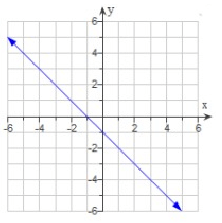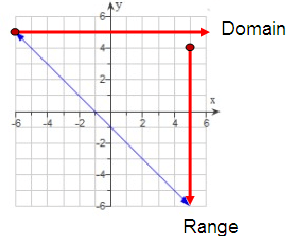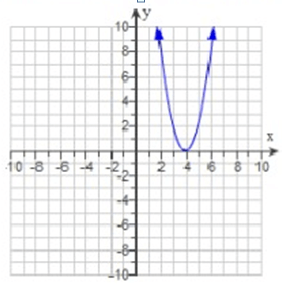SOLVE FOR X IN RELATIONS AND FUNCTIONS
Subscribe to our ▶️ YouTube channel 🔴 for the latest videos, updates, and tips.
Problem 1 :
If f(x) = √(3x – 20), what value of x does f(x) = 4 ?
Solution :
f(x) = √(3x – 20)
f(x) = 4
4 = √(3x – 20)
Squaring on both sides.
42 = (√(3x – 20))2
16 = 3x – 20
Add 20 on both sides.
16 + 20 = 3x
36 = 3x
Divide 3 on both sides.
12 = x
So, the value of x is 12.
Problem 2 :
If g(x) = √(5x + 19) + 20, what value of x does g(x) = 27 ?
Solution :
g(x) = √(5x + 19) + 20
g(x) = 27
27 = √(5x + 19) + 20
Subtract by 20 on both sides.
27 - 20 = √(5x + 19)
7 = √(5x + 19)
Squaring on both sides.
72 = (√(5x + 19))2
49 = 5x + 19
Subtract by 19 on both sides.
49 – 19 = 5x
30 = 5x
6 = x
So, the value of x is 6.
Problem 3 :
If h(x) = 2x3 – 19, what value of x does h(x) = 231?
Solution :
h(x) = 2x3 – 19
h(x) = 231
231 = 2x3 – 19
Add 19 on both sides.
231 + 19 = 2x3
250 = 2x3
125 = x3
x = 5
So, the value of x is 5.
Problem 4 :
(a) Determine whether the graph illustrated represents a function.
(b) Give the domain and range of each function or relation in interval notations.
(c) Approximate the value or values of x where y = 2.

Solution :
(a) Yes it is a function. Because if a vertical line is moved across the graph and, at any time, touches the graph at only one point, then the graph is a function.
(b)

Domain D = (-∞, ∞), Range R = (-∞, ∞)
(c) By drawing the horizontal line through y = 2, the horizontal line is intersecting the given line at -3.
So, the value of x is -3, when y = 2.
Problem 5 :
(a) Determine whether the graph illustrated represents a function.
(b) Give the domain and range of each function or relation in interval notations.
(c) Approximate the value or values of x where y = 2.

Solution :
(a) Yes it is a function. Because if a vertical line is moved across the graph and, at any time, touches the graph at only one point, then the graph is a function.
(b) Domain D = (-∞, ∞), Range R = (0, ∞)
(c) By drawing the horizontal line at y = 2, the horizontal line will intersect the curve at 3 and 5.
So, the points are (3, 2) (5, 2).
Problem 6 :
If G(x) = (2x + 3)/(x – 4) :
a. evaluate i G(2) ii G(0) iii G(-1/2)
b. find a value of x where G(x) does not exist.
c. find G(x + 2) in simplest form
d. find x if G(x) = -3.
Solution :
G(x) = (2x + 3)/(x – 4)
|
i) G(2) = (2(2) + 3)/(2 – 4) = (4 + 3)/-2 = -7/2 |
G(0) = (2(0) + 3)/(0 – 4) = -3/4 |
iii
G(-1/2) = (2(-1/2) + 3)/(-1/2 – 4)
= (-1 + 3) / [(-1 - 8)/2]
= 2 (-2/9)
= -4/9
b. By equating the denominator to 0, we get x - 4 = 0
x = 4. So, for 4 the function is undefined.
c. To find simplest form :
G(x) = (2x + 3)/(x – 4)
G(x + 2) = (2(x + 2) + 3)/((x + 2) – 4)
= (2x + 4 + 3)/(x + 2 – 4)
= (2x + 7)/(x – 2)
d. To find G(x) = -3
G(x) = (2x + 3)/(x – 4)
-3 = (2x + 3)/(x – 4)
Mutiplying (x – 4) on both sides.
-3(x – 4) = 2x + 3
-3x + 12 = 2x + 3
-5x = 3 – 12
-5x = -9
x = 9/5
Problem 7 :
If the value of a photocopier t years after purchase is given by V(t) = 9650 – 860t euros :
a. find V(4) and state what V(4) means
b. find t when V(t) = 5780 and explain what this represents
c. find the original purchase price of the photocopier.
Solution :
V(t) = 9650 – 860t
a.
V(4) = 860 × 4
= 3440
V(4) = 9650 – 3440
= 6210
V(4) means photocopier of 6210 Euros value after 4 years.
b.
V(t) = 5780
9650 – 860t = 5780
-860t = 5780 – 9650
-860t = -3870
t = 3870/860
t = 4.5
So, the value of t is 4.5, the time for the photocopier to reach a value of 5780 Euros.
c. The original purchase price of the photocopier is 9650 Euros.
Subscribe to our ▶️ YouTube channel 🔴 for the latest videos, updates, and tips.
Recent Articles
-
Finding Range of Values Inequality Problems
May 21, 24 08:51 PM
Finding Range of Values Inequality Problems -
Solving Two Step Inequality Word Problems
May 21, 24 08:51 AM
Solving Two Step Inequality Word Problems -
Exponential Function Context and Data Modeling
May 20, 24 10:45 PM
Exponential Function Context and Data Modeling